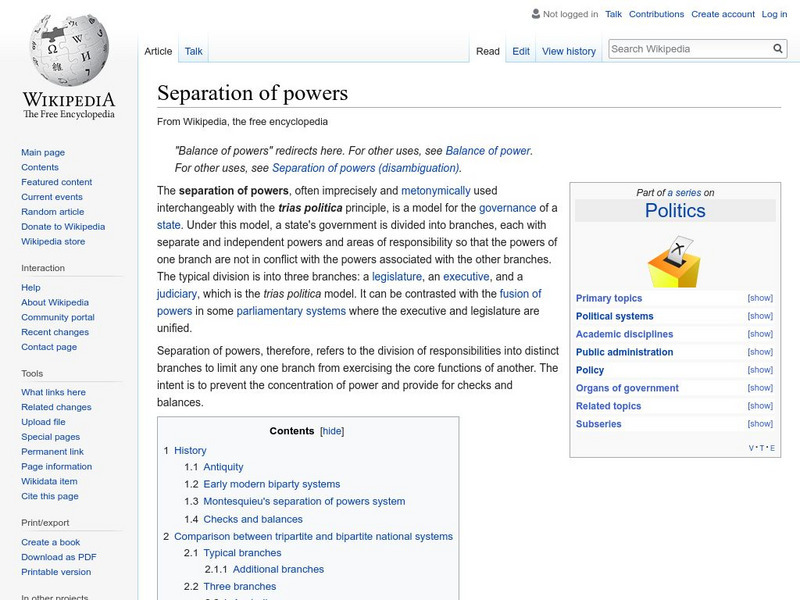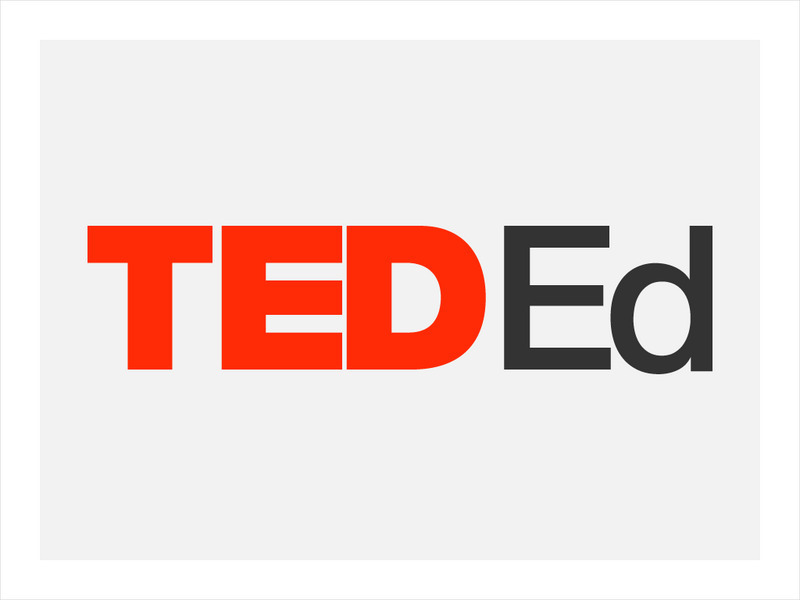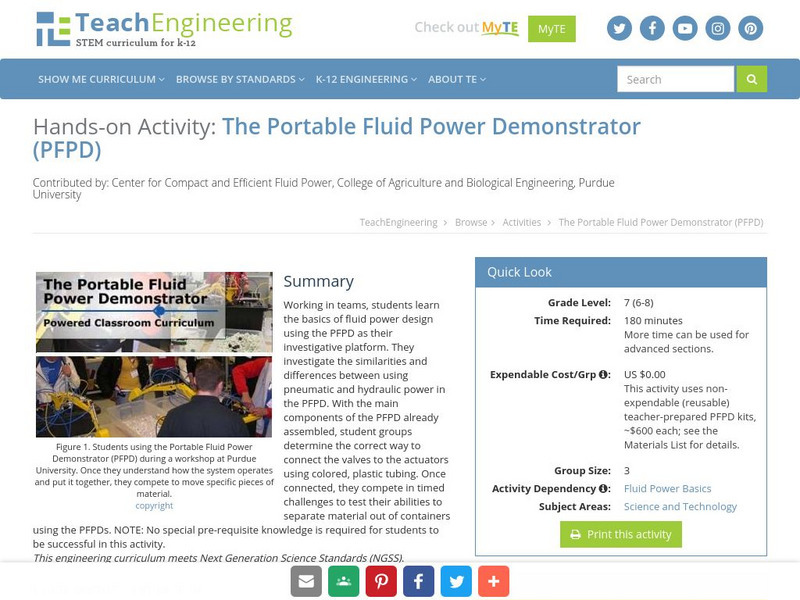US National Archives
Docs Teach: Separation of Powers or Shared Powers
For this activity, students will analyze documents that illustrate the relationship between the legislative, executive and judicial branches. Using the scale in Weighing the Evidence, students will decide whether the United States...
University of Groningen
American History: Outlines: The Separation of Powers
Informative discussion of the ideas behind the Constitutional principle of Separation of Powers.
University of Missouri
Exploring Constitutional Conflicts: Separation of Powers
When do the actions of one branch of the federal government unconstitutionally intrude upon the powers of another branch? This article surveys the history of this question in historic Supreme Court cases.
University of Chicago
The Founders' Constitution: Separation of Powers
Federal Convention on the Separation of Powers as recorded during debate at the convention, June 2, 1787.
Wikimedia
Wikipedia: Separation of Powers
Discusses what separation of powers is, what it looked like in the past, and how it is interpreted in countries around the world and in the United States.
National Humanities Center
National Humanities Center: Toolbox Library: Separation and Power, Making of African American Identity: V. 3
An essay that examines the relationship between racial separation and power. In this essay Stokely Carmichael advocates for the coalescence of political and economic power within the black community in a way that liberates and insulates...
iCivics
I Civics: Separation of Powers: What's for Lunch?
Students find out how the three branches of government interact with each other and how decisions about laws are made by several parts of the U.S. government.
American Bar Association
American Bar Assoc.: Separation of Powers, Connecting the Separate Powers [Pdf]
This instructional activity involves role-playing to help the students understand the separation of powers. [PDF]
TED Talks
Ted: Ted Ed: How Is Power Divided in the United States Government?
Video accompanied by questions for students that looks at how the concept of separation of powers embedded in the Constitution is applied in the United States government. [3:50]
C3 Teachers
C3 Teachers: u.s. History Module: Did Founders Want Government to Work? [Pdf]
A comprehensive learning module on the system of government established by the founders that includes three supporting questions accompanied by formative tasks and primary source materials, followed by a summative performance task....
Tom Richey
Tom Richey: Constitutional Underpinnings of u.s. Government
The first unit of an online course on AP US Government and Politics. It explores key concepts of American government, including constitutional government, republicanism, separation of powers, checks and balances, federalism, construction...
US National Archives
National Archives: Teaching Six Big Ideas in the Constitution
The Constitution can be broken down into 6 main themes: Limited Government, Federalism, Republicanism, Separation of Powers, Checks and Balances, and Popular Sovereignty. Young scholars will study background on the Founding Fathers and...
ClassFlow
Class Flow: Constitution
[Free Registration/Login Required] This flipchart is an in depth Activote questionnaire relating to our Constitution. Students should understand the basic concepts of the Constitution, checks and balances, separation of powers, and...
PBS
Pbs Learning Media: The Powers of Government
Students learn how the three branches of the United States government work together and the powers that the Constitution assigns to each branch-legislative, executive, and judicial.
iCivics
I Civics: State Power: Got a Reservation?
Students discover that states have their own governments and powers separate from the federal government. They learn what those powers are, how they're different from the federal government's powers, and that state governments also give...
Thomson Reuters
Find Law: Article Ii: Presidential Power to Use Troops
In-depth analysis of the use of presidential power to send troops abroad without consent of Congress.
iCivics
I Civics: Games: Branches of Power
Interactive and educational game puts players in control of all three branches of government and tests their abilities to turn issues of concern into full-fledged laws.
TeachEngineering
Teach Engineering: The Portable Fluid Power Demonstrator (Pfpd)
Working as teams, students learn the basics of fluid power design using the PFPD as their investigative platform. Students will investigate the similarities and differences between using pneumatic and hydraulic power in the PFPD. While...
Cato Institute
Executive Orders and National Emergencies
The subtitle of this essay is "How Presidents Have Come to 'Run the Country' by Usurping Legislative Power." It discusses how the Constitution defines executive powers in a general way, with few limitations on the power of the President...
Other
A Republic, if You Can Keep It
An essay by U.S. Congressional Representative Ron Paul of Texas on the state of the American republic delivered at the dawn of the twenty-first century. He argues for the strong separation of powers among the three branches of government...
iCivics
I Civics: Constitution Day Lesson Plan
This interactive lesson gives students a quick snapshot of the Constitution, including the purpose of each article, the powers of the three branches, how a bill becomes a law, and the concepts of separation of powers and checks and...
Other
Usa Gov: Three Branches of Government
Lesson plans for learners to learn about the three branches of government. They can find information about the origins of the Constitution, separation of powers, and details about each of the three branches.
Schools of California Online Resources for Education
Score: The u.s. Constitution Power Grab Game
Politicians like power, but who actually gets to use their powers in different situations? Take this quiz to sort out the checks and balances that are used on the various power plays.
Energy4Me
Energy4me: Tower of Power
Students will learn that heat is needed to separate crude oil/petroleum into useable substances to make the products we use every day.
















